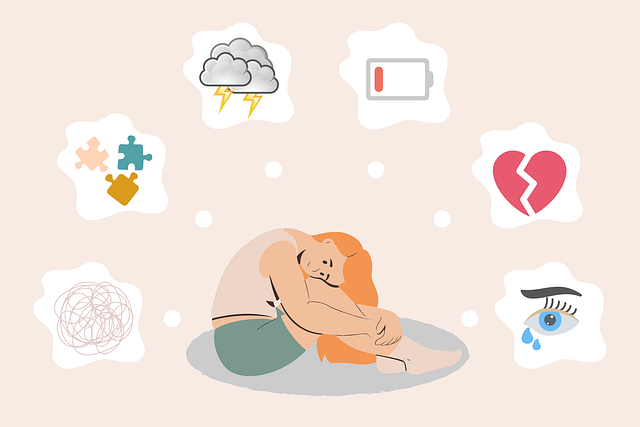TL;DR:
Therapy for children with terminal illnesses involves risk assessment and harm minimization planning to address physical and psychological hazards, enhancing emotional well-being and preventing burnout. Healthcare professionals adapt age-appropriate techniques like storytelling and play therapy in a non-judgmental space, integrating holistic strategies including self-care practices. The goal is to help kids navigate their journey with dignity, resilience, and joy, tailoring interventions based on cultural sensitivity and regular plan reviews.
Risk assessment and harm minimization planning are vital components of providing therapy for children with terminal illnesses. This comprehensive guide delves into these essential practices, offering unique considerations tailored to the delicate nature of pediatric care. From understanding risk assessment techniques to practical steps for implementation and continuous improvement, healthcare professionals can enhance safety measures and foster optimal outcomes. By exploring these strategies, therapists can navigate the complexities of terminal illness, ensuring compassionate and effective therapy.
- Understanding Risk Assessment and Harm Minimization Planning
- Unique Considerations in Therapy for Children with Terminal Illnesses
- Practical Steps for Implementation and Continuous Improvement
Understanding Risk Assessment and Harm Minimization Planning

Risk assessment and harm minimization planning are essential components in providing therapy for children with terminal illnesses. It involves a thorough evaluation of potential risks associated with the child’s condition, treatment options, and support systems. By understanding these risks, healthcare professionals can develop comprehensive strategies to minimize any potential harm and enhance the child’s emotional well-being.
This process includes identifying both physical and psychological hazards, as well as implementing proactive measures to prevent or mitigate them. For instance, creating a structured self-care routine development for better mental health can be a powerful tool in burnout prevention. It equips children with coping mechanisms, promotes emotional stability, and fosters a sense of control, all of which are crucial for navigating the challenges that come with a terminal illness diagnosis.
Unique Considerations in Therapy for Children with Terminal Illnesses

When it comes to Therapy for Children Terminal Illnesses, several unique considerations come into play. These young individuals face not only the challenges of their medical condition but also the emotional and psychological impacts of knowing they are facing a terminal diagnosis. Therapists must tailor their approaches to be age-appropriate, using techniques that resonate with children while acknowledging their developmental stages. This involves creating a safe, non-judgmental space where kids can express their fears, anxieties, and feelings without stigma or pressure.
In the context of Mental Wellness Podcast Series Production, therapists can leverage storytelling, play therapy, and creative expression to engage young patients. Self-Care Practices and Burnout Prevention are also paramount for both children and their support systems. This includes ensuring that therapy sessions not only focus on coping mechanisms but also promote overall mental wellness. By integrating holistic strategies, therapists can help children with terminal illnesses navigate their journey with dignity, resilience, and as much joy as possible.
Practical Steps for Implementation and Continuous Improvement

Implementing risk assessment and harm minimization plans is a multifaceted process that requires a dedicated approach. For therapy involving children with terminal illnesses, this involves tailored strategies to address unique challenges. The initial step is to conduct a thorough evaluation of potential risks and hazards within the therapeutic environment. This includes identifying physical, emotional, and psychological stressors that may impact the child’s well-being.
Once identified, specific interventions can be designed. Incorporating stress management techniques, such as mindfulness meditation, has proven beneficial in mitigating anxiety and fostering resilience. Additionally, cultural sensitivity in mental healthcare practice is paramount, ensuring that therapeutic approaches are aligned with the family’s values and beliefs. Regular reviews and adjustments to these plans are essential for continuous improvement, allowing for a dynamic response to evolving needs.
Risk assessment and harm minimization planning are essential components of providing compassionate and effective therapy for children with terminal illnesses. By understanding unique considerations specific to this population, healthcare professionals can implement practical steps that not only mitigate risks but also enhance the quality of life for these vulnerable patients. Through a structured approach, continuous improvement, and tailored interventions, therapists can ensure that each child receives the best possible care during their journey.













